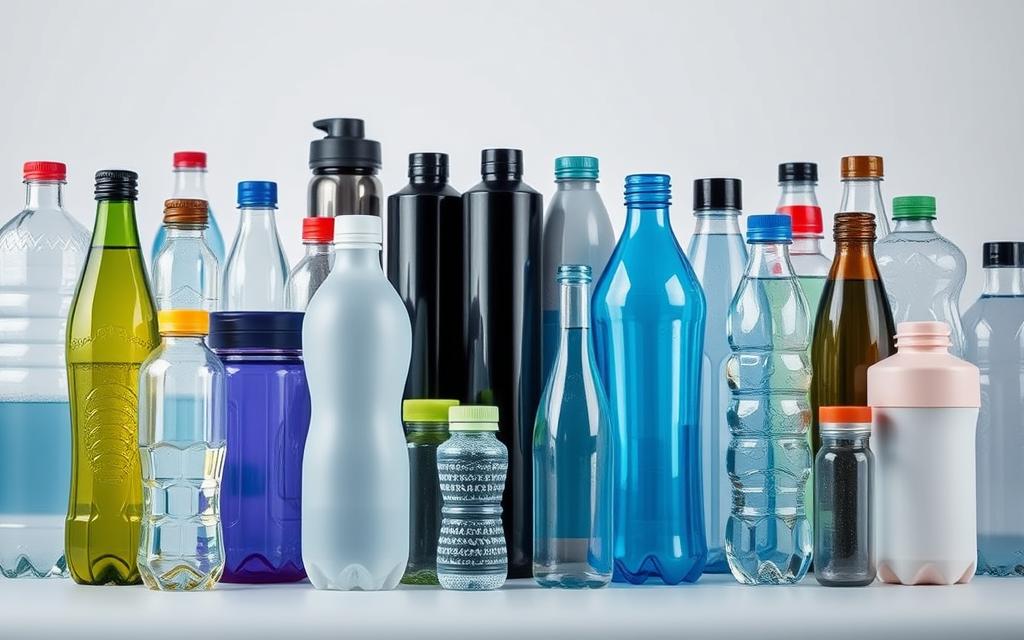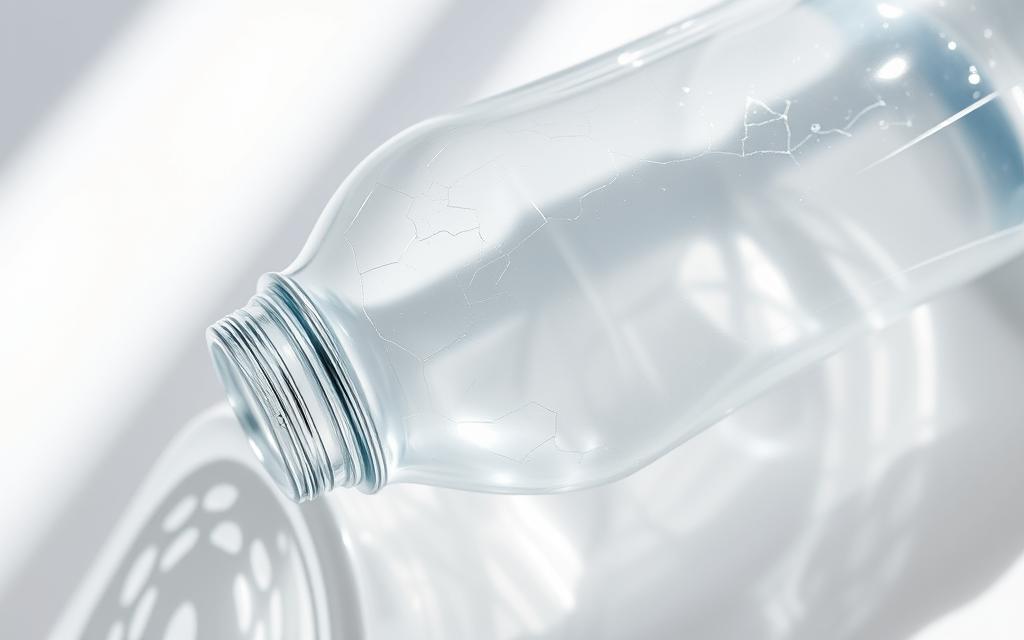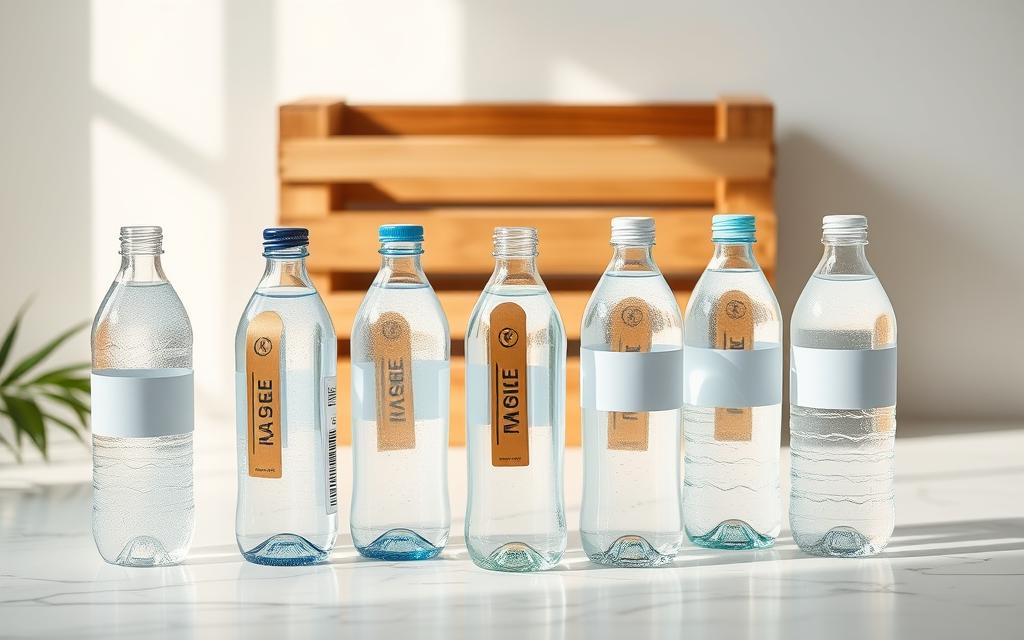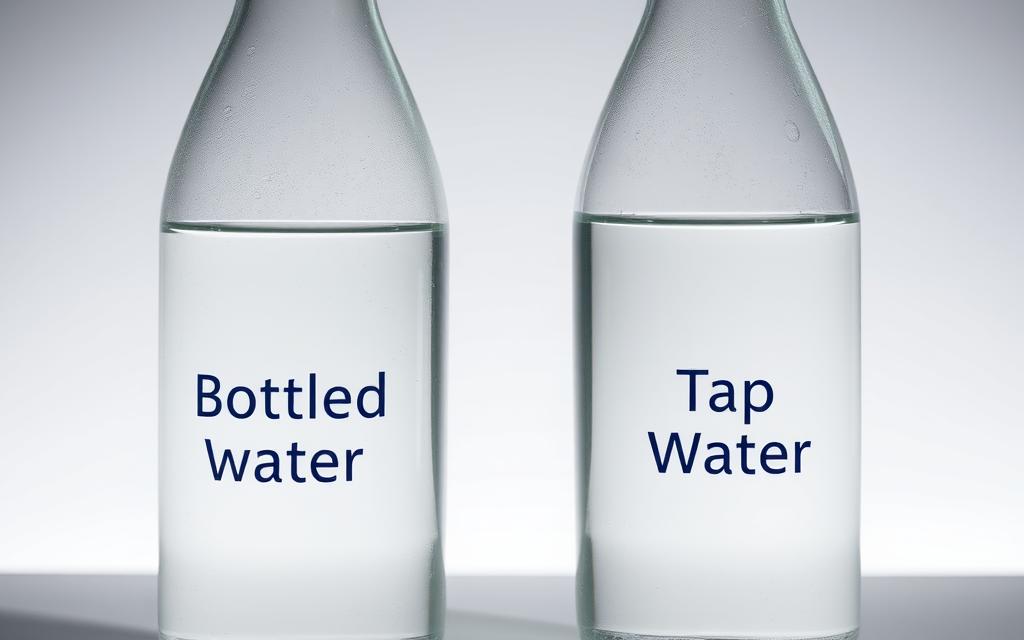Ever thought about the health risks of your reusable water bottle? It’s a growing concern as more of us choose eco-friendly hydration. The question is, are these bottles safe for us?
I’m looking into the health risks of using plastic water bottles over and over. What might seem like a green choice could actually be harmful. There could be dangers in the bottle you use every day.
Our choice of water bottles affects our health more than we think. It’s not just about being convenient. It’s about keeping us safe from chemicals and bacteria. Let’s dive into the details of plastic water bottle safety.
Key Takeaways
- Reused plastic bottles may harbor hidden health risks
- Not all plastics are created equal in terms of safety
- Chemical leaching can occur with repeated use
- Bacteria can multiply in improperly cleaned bottles
- Regular inspection of water bottles is critical
Understanding Plastic Water Bottles and Their Uses
Not all plastics are the same when it comes to reusable water bottles. As someone who cares about safety, I’ve looked into plastic materials. This helps you make better choices.

Plastic water bottles vary in what they’re made of. Each type affects their safety and if they can be recycled. Let’s look at the common plastics used in making water bottles.
Exploring Plastic Varieties
The main plastics in water bottles are:
- PET (Polyethylene Terephthalate): It’s light and clear, used in most single-use bottles
- HDPE (High-Density Polyethylene): It’s strong and not clear, found in milk jugs and some reusable bottles
- Polycarbonate: This one has concerns about BPA in water bottles
Popular Brands and Material Choices
Big water bottle makers pick materials based on how long they last, cost, and safety rules. Brands like Nalgene and CamelBak now use BPA-free materials to meet health concerns.
Knowing what your bottle is made of is key to avoiding dangers. Always check the recycling code and material info before using it a lot.
Knowing your bottle’s material is the first step in protecting your health and making environmentally conscious choices.
Health Risks of Reusing Plastic Water Bottles
It’s important to know the dangers of reusing plastic water bottles for your health. Plastic bottle toxins can harm you without you even realizing it. So, it’s key to understand the risks of reusing plastic bottles.
Harmful Chemicals That May Leach
Plastic bottles can release harmful chemicals when exposed to heat, sunlight, or stored for a long time. The main toxins include:
- Bisphenol A (BPA)
- Antimony
- Phthalates
These chemicals can mess with your hormones and lead to serious health issues. Heat and repeated use make chemical leaching more likely.
Potential for Bacterial Growth
Reused plastic water bottles are perfect for bacteria to grow. Tiny scratches and moisture trap bacteria, making your bottle a breeding ground for harmful germs.
- Invisible scratches harbor bacteria
- Moist environments accelerate bacterial growth
- Infrequent cleaning increases contamination risks
Long-Term Health Effects of Reuse
The dangers of reusing plastic bottles go beyond immediate risks. Long-term exposure to plastic toxins can lead to:
- Potential hormone disruption
- Increased risk of certain cancers
- Digestive system complications
- Potential immune system challenges
Your health is worth more than a convenient water bottle. Understanding these risks can help you make informed choices about your hydration habits.
Guidelines for Safe Reuse of Plastic Bottles
Reusing plastic water bottles might seem handy, but it’s important to know the risks. I’ve gathered key tips to help you safely reuse plastic bottles. This way, you can use them longer without health worries.
Keeping your bottles clean is key to avoiding bacteria and health issues. Here are my top tips for safely reusing plastic water bottles:
- Wash bottles thoroughly with hot, soapy water after each use
- Use a bottle brush to clean hard-to-reach areas
- Rinse completely to remove all soap residue
- Allow bottles to air dry completely before reusing
Best Practices for Bottle Care
Improper care can increase the risks of using plastic water bottles. Always check your bottle for these signs:
- Visible scratches or cracks
- Unusual odors
- Discoloration
- Cloudy appearance
Recommended Bottle Lifespan
Experts say to replace plastic water bottles every 3-6 months. This stops bacteria from growing and reduces chemical leaching risks. Keeping track of your bottle’s age can keep you safe from health issues.
Pro tip: When in doubt, throw it out! Your health is worth more than saving a few dollars on a replacement bottle.
Identifying Safe Plastics for Reuse
Finding safe plastics for reuse can be tricky. Not all plastics are the same. Knowing which ones might be harmful is key to making smart choices.
Recycling codes on bottles tell us a lot about their safety. They show us which plastics might be risky if we reuse them.
Decoding Recycling Codes
Every plastic has a recycling code that shows its chemical makeup. Here’s a simple guide to these codes:
- Code 1 (PETE/PET): Usually safe for one-time use, but not for repeated use
- Code 2 (HDPE): Very safe, often found in milk jugs and detergent bottles
- Code 3 (PVC): Don’t reuse – it might have harmful chemicals
- Code 4 (LDPE): Low risk, but not usually in water bottles
- Code 5 (PP): Safe for reuse and can handle heat
- Code 6 (PS): May be risky, so avoid reusing
- Code 7 (Other/Polycarbonate): May have BPA, be careful
BPA-Free Options in the Market
Today, there are many BPA-free water bottles available. Brands like Nalgene, CamelBak, and Klean Kanteen are open about their materials. This helps us make better choices for our health.
“Knowledge is your best defense when it comes to protecting your health through smart plastic choices.” – Health Safety Expert
By learning about recycling codes and picking BPA-free bottles, we can lower health risks from reusing plastic water bottles.
Environmental Impact of Plastic Bottle Reuse
Plastic waste is a big problem that affects our whole planet. The dangers of plastic water bottles go beyond just our health. They harm the environment we all live in.
The numbers on plastic use are huge. The Environmental Protection Agency (EPA) says only 9% of plastic waste is recycled. But, about 30% of consumer plastics are recycled.
The Benefits of Reducing Plastic Waste
Using water bottles again can really help our planet. By choosing to reuse, we can:
- Reduce plastic production demands
- Decrease landfill contributions
- Lower carbon emissions from manufacturing
- Minimize marine ecosystem contamination
How Reusing Bottles Can Be Eco-Friendly
Even with BPA in some bottles, reusing them can be good for the environment. Not all plastic bottles are created equal. Knowing how to recycle and picking the right bottles can make a big difference.
“Every bottle reused is a step toward a cleaner planet.”
I suggest slowly switching to better options like stainless steel or glass bottles. Also, take good care of your plastic bottles when you reuse them.
Alternatives to Reusing Plastic Water Bottles
After learning about the dangers of reusing plastic bottles, you might be looking for safer ways to stay hydrated. The good news is that there are many great alternatives. These options help you avoid the toxins found in plastic bottles while being kind to the environment.
Let’s look at two popular choices that keep you hydrated without the risks of plastic bottles.
Stainless Steel Bottles: Durability Meets Safety
Stainless steel bottles are a strong choice against plastic water containers. They have many benefits:
- No chemical leaching
- Extremely durable design
- Excellent temperature retention
- Long-lasting performance
Stainless steel bottles might cost more upfront. But they are a smart investment in your health. The initial cost is worth it for years of safe use and protection from plastic toxins.
Glass Bottles: Purity and Transparency
Glass bottles are another top choice against plastic. They have special features:
- Zero chemical contamination
- Easy to clean thoroughly
- Neutral taste preservation
- Environmentally friendly
The main downside of glass bottles is their fragility. Look for models with silicone sleeves to prevent breakage and improve grip.
Your health is worth investing in quality hydration solutions that protect you from harmful effects of reusing plastic bottles.
Switching to stainless steel or glass bottles can greatly lower your exposure to plastic toxins. It also supports a more eco-friendly lifestyle.
Signs Your Plastic Water Bottle Needs Replacement
Knowing when to replace your plastic water bottle is key for your health. Reusing it too much can cause wear and tear. This can make the bottle unsafe and unhygienic.
Spotting when a water bottle is no longer good is important. It helps you avoid health risks from using old bottles. Let’s look at the signs that mean it’s time for a new one.
Visible Wear and Tear Warning Signs
- Scratches and Cracks: Deep scratches can harbor bacteria
- Discoloration or a cloudy look
- Sticky smells that won’t go away
- A bottle that’s warped or not shaped right
Proper Disposal Methods
When your water bottle shows many signs of wear, it’s time to dispose of it properly. Here’s how to do it right:
- Look up local recycling rules for plastics
- Clean the bottle well before recycling
- Take off any parts that can’t be recycled, like labels or caps
- Put it in the recycling bin
“Your health is worth more than saving a few dollars on an old water bottle.”
By keeping an eye on your water bottle’s condition, you protect yourself. You also help the environment.
My Personal Experience with Reusing Plastic Bottles
I started an experiment to see if reusing plastic water bottles was safe. I wanted to learn about the health risks. So, I tracked my experience for a whole year.
Over the year, I found some important facts about plastic water bottles:
- Not all plastics are good for reuse
- Cleaning bottles well is key to avoid bacteria
- Looking closely can show hidden dangers
Lessons from My Reuse Experiment
My experiment showed me some surprising things. I found out that some bottles break down faster. This can lead to chemicals leaking into the water.
“Understanding your bottle’s material is the first step to safe hydration.” – Personal Observation
Transitioning to Safer Alternatives
After seeing the risks, I started using safer bottles. I looked for bottles made from materials that are better for you.
| Bottle Type | Safety Rating | Durability |
|---|---|---|
| Stainless Steel | High | Excellent |
| Glass | High | Medium |
| BPA-Free Plastic | Medium | Good |
My main lesson: Take care of your health by choosing the right containers.
Conclusion: Making Informed Choices About Plastic Bottles
Exploring reusable water bottles has shown us how important our choices are. There are dangers, but we can handle them. Knowing about BPA and health risks helps us choose better.
Looking into plastic bottle safety, we see not all are safe. Some materials are risky, while others are safer. Using PET bottles can cut down waste, but we must clean and replace them wisely.
Choosing wisely and using bottles right is key. Check recycling codes, avoid worn-out bottles, and pick stainless steel or glass. This way, we can avoid health risks. Buying BPA-free bottles is a smart move for our health and the planet.
Our choices about water bottles show our care for health and the environment. With the right info, we can stay healthy and reduce plastic waste. Every time we pick a bottle, we can make a difference.



